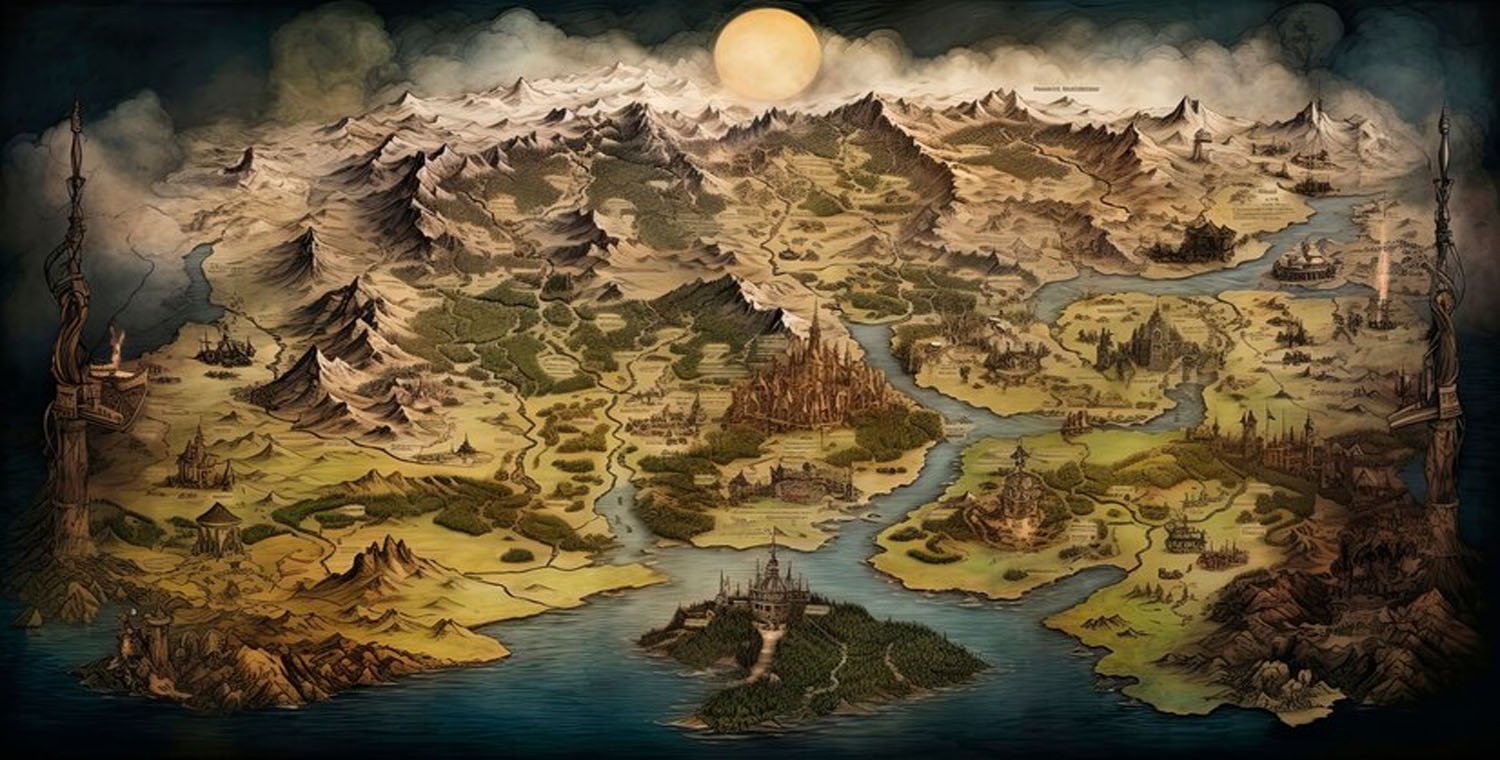\The Elden Ring map is one of the most expansive and intricate elements of FromSoftware’s critically acclaimed action RPG. As players journey through the vast and varied world of the Lands Between, the map serves as an essential tool for exploration, navigation, and uncovering the game’s many secrets. This comprehensive guide explores everything you need to know about the Elden Ring map, from key locations and landmarks to tips for using it effectively during your journey.
What is the Elden Ring Map?

The Elden Ring map is a vast, open-world landscape divided into several major regions, each with its own unique environments, characters, enemies, and lore. Unlike the more linear design of previous FromSoftware titles, Elden Ring offers players the freedom to explore a massive interconnected world. The map is crucial for navigating this world, especially considering the game’s non-linear nature and the numerous optional paths and hidden areas that exist.
As you progress through the game, the Elden Ring map expands and reveals new areas. However, it’s important to note that not all of the map is visible at the start. Exploration plays a significant role in uncovering the full layout of the Lands Between. Players will find hidden sections of the map as they venture into unknown territories or complete specific objectives.
Key Features of the Elden Ring Map
- Regional Divisions
The Elden Ring map is split into several distinct regions, each with its own environmental themes. Some of these regions are vast open plains, while others are treacherous mountains, haunted forests, or ruined cities. Some of the major regions you’ll encounter include:- Limgrave: The starting area of the game, a land of rolling hills and forests, offering a mix of open exploration and early game challenges.
- Weeping Peninsula: A coastal area with a dark, gloomy atmosphere, filled with ruined castles and hostile creatures.
- Liurnia of the Lakes: A waterlogged, swampy region with both dangerous marshes and abandoned ruins.
- Caelid: A desolate, red-tinted wasteland with an eerie atmosphere, housing some of the most difficult enemies early on.
- Altus Plateau: A higher elevation with a more structured environment, full of large buildings, fortresses, and tougher enemies.
- Map Fragments
Unlike many open-world games that have the map fully unlocked from the beginning, the Elden Ring map is initially incomplete. To view more detailed sections of the map, players must find and collect map fragments scattered throughout the world. These fragments are typically found in the form of items in specific locations and need to be discovered by the player through exploration. - Landmarks and Points of Interest
The Elden Ring map is dotted with a wide variety of landmarks and points of interest. From ancient ruins and dungeons to massive castles and cryptic locations, the world of Elden Ring is full of mysteries. These landmarks serve as guides for players, indicating where they should head next or where they may find unique loot, bosses, or story events.Some notable landmarks include:- The Roundtable Hold: A hub area where players can interact with NPCs, upgrade equipment, and receive quests.
- The Eternal City: A ruined metropolis full of hidden treasures and tough enemies.
- The Legacy Dungeons: These dungeons are more traditional in their design, similar to those in Dark Souls, featuring tight corridors, tough bosses, and intricate puzzles.
- The Open-Ended Nature of the Map
The beauty of the Elden Ring map lies in its open-ended structure. There are no strict paths or mandatory directions; you can wander in any direction and uncover new places, enemies, and secrets. This approach is characteristic of Elden Ring’s design philosophy, giving players the agency to choose how they want to explore.The map does not directly guide you from one location to another but instead provides the tools and freedom to create your own path. This means that even if a region seems too difficult at first, you can always explore elsewhere, leveling up and gathering resources before returning.
How to Use the Elden Ring Map Effectively
While the Elden Ring map is expansive and rich with detail, it’s also important to know how to use it effectively. As a non-linear game, it’s easy to feel lost or overwhelmed. Here are some key tips for getting the most out of your Elden Ring map experience:
- Use the Map as a Tool for Exploration
The Elden Ring map is designed to encourage exploration. As you uncover more of the map, you’ll notice new icons and markings that suggest areas of interest. Pay attention to these as they may indicate dungeons, boss fights, NPCs, or other important locations.Keep in mind that many points of interest are not marked, so you should also keep an eye on the world around you, looking for clues like unique terrain features, unusual structures, or changes in the environment. - Mark Locations with Pins
One of the most useful features of the Elden Ring map is the ability to mark locations with pins. Whether you’re trying to remember a dungeon entrance or marking an area you intend to revisit later, this system helps you keep track of important spots.You can place up to 99 markers at any time, which is incredibly helpful for players who enjoy taking their time to explore and uncover all the game has to offer. - Look for Landmarks
Landmarks in Elden Ring are more than just visual elements; they are key to navigating the world. They can help you orient yourself and find your way back to important areas. Tall structures, towering trees, or large bridges all serve as excellent points of reference. - Follow the Map’s Geography, Not Just the Questline
While the Elden Ring map provides geographical boundaries, don’t feel pressured to always follow the main story. The world of Elden Ring encourages exploration, and you can often find better equipment, hidden areas, and new paths just by wandering off the beaten track. - Use Fast Travel to Your Advantage
As you unlock new sites of grace (the game’s fast travel points), make sure to use the Elden Ring map to fast travel between regions. This feature saves a lot of time and helps you re-explore previously visited areas after leveling up or collecting new equipment. - Take Advantage of the Horse
The open-world nature of the Elden Ring map makes traversal a key challenge. Fortunately, Elden Ring introduces Torrent, a spectral steed that greatly increases your mobility. Use the map to plan your routes and utilize Torrent for faster travel across long distances, allowing you to focus on exploration rather than slow, tedious movement.
Hidden Secrets of the Elden Ring Map
The Elden Ring map is full of hidden secrets waiting to be uncovered. While many players will follow the main story path, there’s so much more to the world than meets the eye. Some of the most intriguing aspects of the map are its hidden regions and optional quests that players can miss if they don’t explore thoroughly.
- Hidden Dungeons and Areas
The game features numerous hidden dungeons and areas that are not immediately apparent on the map. These locations are often tucked away behind environmental obstacles like cliffs, hidden paths, or caves. Some require specific actions or quests to unlock, so keep your eyes peeled for any suspicious-looking spots. - Secret Bosses
As with previous FromSoftware games, Elden Ring includes several optional bosses that can only be found by exploring hidden areas on the map. These bosses often provide great rewards and are typically tougher than the main story bosses, so make sure to test your strength and challenge yourself. - Unusual Environmental Features
The Elden Ring map is filled with environmental features that contribute to the game’s immersive world. Watch out for large, imposing structures, eerie forests, and strange atmospheric phenomena. These locations are often tied to the game’s lore, providing fascinating background stories and connections to the overall plot.
Conclusion
The Elden Ring map is one of the most crucial aspects of the game, providing a vast playground for exploration and discovery. With its open-ended design, intricate regions, and hidden secrets, the map is a powerful tool that guides players through the Lands Between. Understanding how to use the map effectively, from marking locations to uncovering hidden areas, can significantly enhance your Elden Ring experience.




